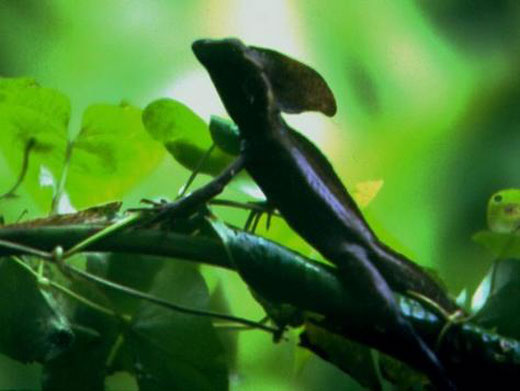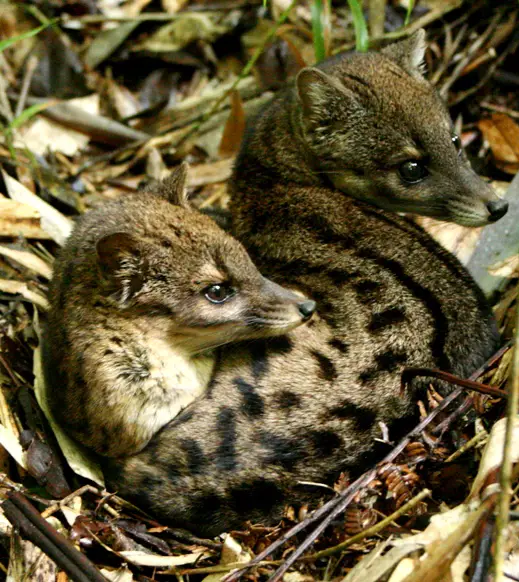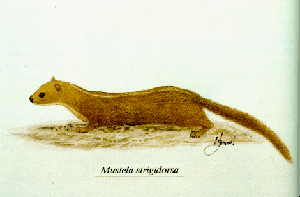Jesus Christ Lizard
Jesus Christ Lizard is a lizard endemic to Central and South American rain forests amidst streams and rivers. It is also known as basilisk. The menu for his dining comprises of flowers, insects and small vertebrates such as birds, snakes and fish. It has so many predators that include large birds of prey, fish, snakes, and birds. Also, larger reptiles include on the predator’s list too. Besides, it is not endangered.
Description
In captivity, its maximum lifespan is around 7-8 years. However, in the wild, they kick the bucket much sooner than in captivity. As well as that, females lay about 2-18 eggs and that too five to eight times a year. After about three months, eggs begin to hatch. Simultaneously, it gives birth to a young one who will weigh about two grams.

Jesus Christ Lizard
This amazing concealment lets them to remain undetected at the time when they remain motionless in the undergrowth. They possess sharp claws and long toes. Also, their head is titivated with both a colored dewlap and a crest. Most of them are less than 25 centimeters i.e. one foot in length, but it depends, some may grow up seventy five centimeters and normally weigh between two hundred to six hundred grams. Similar to other reptiles, Jesus Christ Lizards are on the go at the time of day.
Classification
These lizards are part of the kingdom named Animalia. They are of the phylum chordate group. Besides, they are of the class Sauropsida. As far as the order is concerned, they are of the order Squamata. Iguania is their sub order group. Moreover, in terms of family, they belong to a family named Corytophanidae. Adding to the classifications list, they belong to the genus named Basiliscus. That’s why; we can call it as Basiliscus too. Also, they are of the B.basiliscus species. Also, their binomial name is Basiliscus basiliscus. Thus, this is the classification of the lizard.
Description
The basilisk and the brown basilisk both have got this nickname of the “Jesus Christ Lizard” or “Jesus Lizard”. This is because when they want to flee from the predator, they always gather enough or the required momentum to run on top of water for a brief distance. They are equipped with large hind feet with flaps of skin between each toe. It is much similar to the webbing on a frog.
At the tine when lizard starts walking the land, these are rolled up. But, if it gets the sense about some danger, it will open up this webbing to amplify the area of the surface on the water pertinent to its weight. This allows it to run on water for short distances. About ten to twenty meters can be covered on the surface of the water by smaller lizards without sinking. Moreover, it can usually run farther than the older lizards and to a much greater distance.



LOL … do you get penalized for using the lord’s name in vein when you say this creature’s name ;-)
IF WE COULD TALK TO THE ANIMALS16.
No of course not God Created it didnt he!
Flutloop 15, That was a really great answer to Hogans question. It’s a wonderful creature as are most of Gods creations. Good mind ya got their, Mr.15
this site helped wen researchin this animal
even if i am using the lord name in vain… I LOVE THE JESUS CHRIST LIZARD. the pure fact that he can run on water is just awsome. i would LOVE to have a pet like this
i know right it is so cool
Who gave the Jesus Christ Lizard it’s name?
IF WE COULD TALK TO THE ANIMALS16